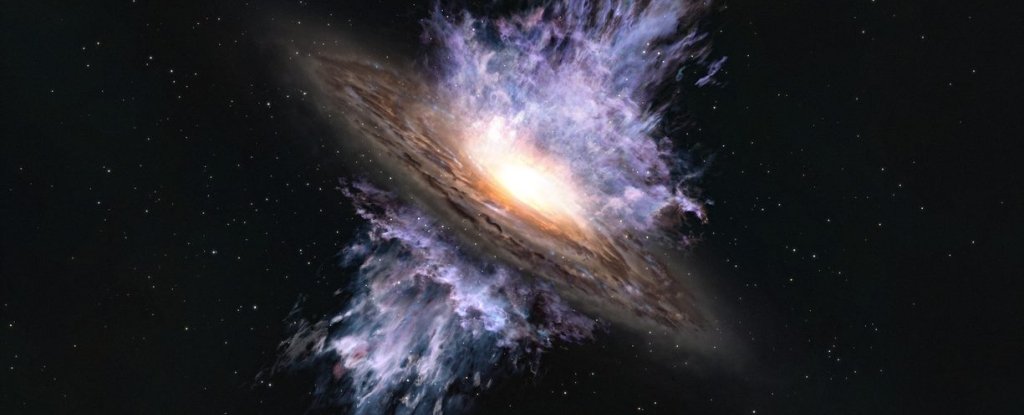Products You May Like
In the far reaches of the Universe, a supermassive black hole is throwing a tantrum.
It’s blowing a tremendous wind into intergalactic space, and we’re seeing the storm light from 13.1 billion years ago, when the Universe was less than 10 percent of its current age. It’s the most distant such tempest we’ve ever identified, and its discovery is a clue that could help astronomers unravel the history of galaxy formation.
“The question is when did galactic winds come into existence in the Universe?” said astronomer Takuma Izumi of the National Astronomical Observatory of Japan (NAOJ).
“This is an important question because it is related to an important problem in astronomy: how did galaxies and supermassive black holes coevolve?”
Supermassive black holes cannot be separated from galaxies. These huge objects, millions to billions of times the mass of the Sun, make up the powerful heart of the galactic system – the gravitational nucleus around which everything else in the galaxy revolves.
They also play a huge role in how their galaxies form. One of the ways they do so is a mechanism called feedback. Powerful winds from the supermassive black hole gust through space, blowing away material that would produce stars in some areas, or forcing it to collapse into new stars in others. Ultimately, the black hole’s presence sets constraints on the stellar mass of the galaxy.
Interestingly, the mass of a supermassive black hole is generally roughly proportional to the central bulge of the galaxy around it. Astronomers are not sure why it happens, since a galaxy has much more mass than its supermassive black hole, by about 10 orders of magnitude; but the proportionality suggests that supermassive black holes and their galaxies evolve together, rather than forming separately and coming together later.
To investigate how early feedback can be observed in the Universe, Izumi and his colleagues used the Atacama Large Millimeter/submillimeter Array (ALMA) radio telescope in Chile to look for motion in the gas flows around galaxies with supermassive black holes in the early Universe.
They found a galaxy called J1243+0100, just a few hundred million years after the Big Bang. Analysis of the radio emission from dust in the galaxy suggested powerful outflows of 500 kilometers (310 miles) per second, at an outflow rate of 447 times the mass of the Sun per year – definitely powerful enough to quench the birth of any stars.
This makes it the earliest black hole wind identified to date, extending the record by 100 million years, suggesting that feedback emerged relatively early in the history of the Universe.
That’s not the only thing that emerged early, however. Measurements showed that the supermassive black hole clocks in at around 330 million times the mass of the Sun.
By studying the ALMA data, researchers were also able to measure the mass of J1243+0100’s bulge. It clocked in at 30 billion times the mass of the Sun, making the black hole’s mass proportional at roughly 10 percent that of the bulge.
This suggests that the coevolution of supermassive black holes and their host galaxies has also been occurring since at least a few hundred million years after the Big Bang.
“Our observations support recent high-precision computer simulations which have predicted that coevolutionary relationships were in place even at about 13 billion years ago,” Izumi said.
“We are planning to observe a large number of such objects in the future, and hope to clarify whether or not the primordial coevolution seen in this object is an accurate picture of the general Universe at that time.”
The research has been published in The Astrophysical Journal.
